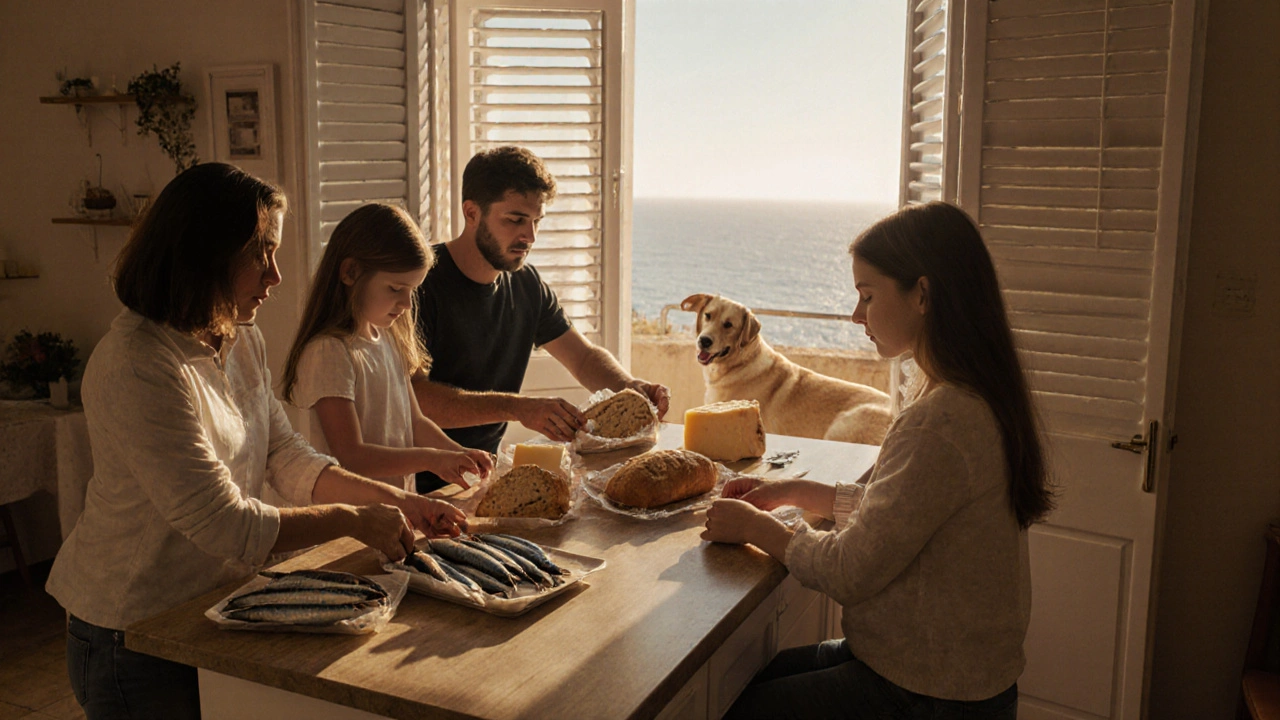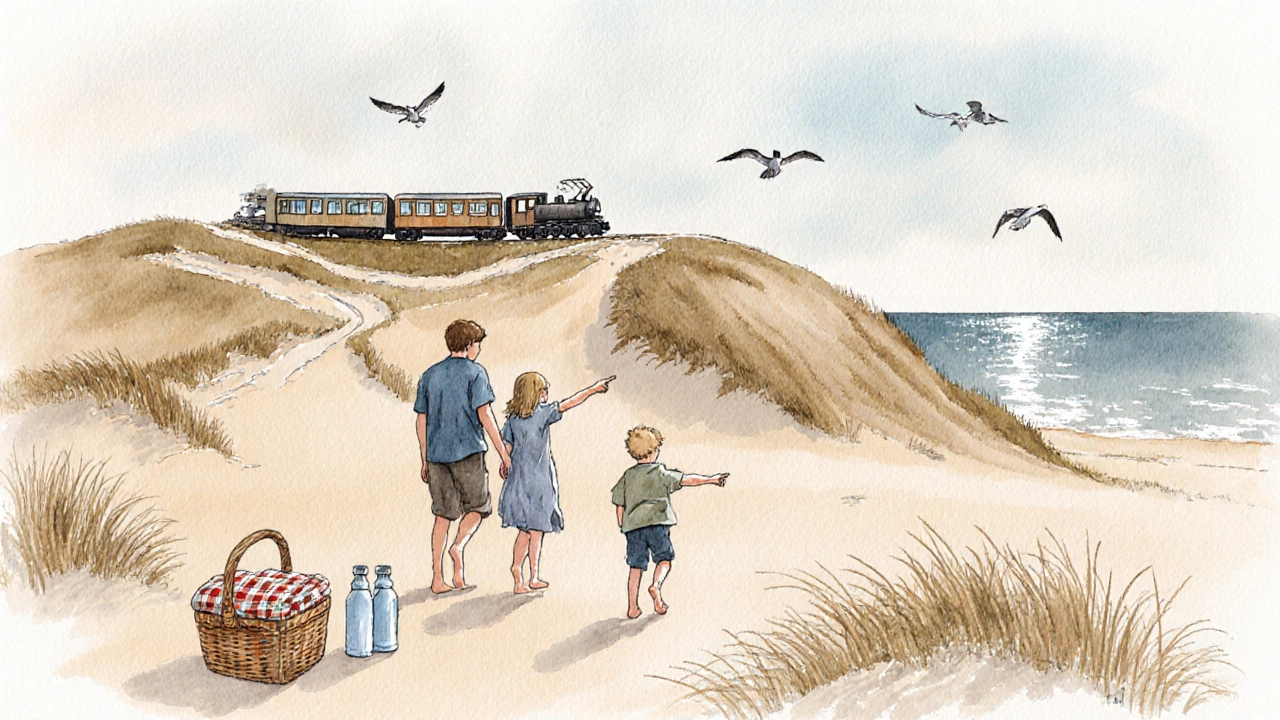Where Is the Cheapest Place for a Family Holiday in 2025?
 Nov, 23 2025
Nov, 23 2025
Family Holiday Cost Estimator 2025
Estimate your trip costs based on the most affordable family destinations in 2025. Enter your details to see how much you could save compared to peak season.
Your estimated costs for
Key savings: Traveling in saves 30-50% compared to peak season. You'll get better service, quieter beaches, and more space at restaurants.
Planning a family holiday doesn’t have to mean draining your savings. In 2025, you can still take the whole crew away-kids, grandparents, even the dog-if you know where to look. The cheapest places for a family holiday aren’t hidden secrets. They’re places where local economies rely on tourism, where accommodation is plentiful, and where meals, transport, and activities stay affordable even during peak season.
Portugal’s Algarve Region
Portugal’s Algarve is the quiet winner for budget family trips. It’s not just about the beaches. It’s about value. A three-bedroom apartment near Lagos or Albufeira costs around €600 a week in late September or early October. That’s less than half the price of a similar unit in Spain or Italy. Supermarkets like Lidl and Pingo Doce make grocery shopping cheap-fresh fruit, bread, and local cheese cost less than in most Canadian cities. A family of four can eat out for under €25 at a local tasca, where grilled sardines and rice with clams are daily specials.
Public transport is reliable and cheap. Buses run between towns every 30 minutes. Many beaches are free, and lifeguards are on duty during summer. The Zoomarine aquarium in Albufeira charges €28 per adult and €20 for kids under 12. Compare that to €45+ at similar parks in the UK or US. And don’t forget the free walking tours in historic towns like Silves and Tavira. You get culture, history, and sunburn-all without breaking the bank.
Bulgaria’s Black Sea Coast
If you want big beaches, low prices, and fewer crowds, Bulgaria’s Black Sea coast is your best bet. Sunny Beach, near Nesebar, has been a family favorite since the 1970s-and it still is. A week in a two-bedroom apartment with kitchen access runs about €350 in September. That’s less than $400 CAD. You can rent bikes for €5 a day, and kids’ clubs at resorts cost under €10 per day. Many hotels include breakfast and even dinner in the price.
Local markets sell fresh watermelon for €0.50 a piece and grilled corn for €1. A family lunch at a seaside restaurant with seafood stew, salad, and lemonade runs €20. The water is warm enough for swimming until mid-October, and the beaches are wide and sandy. Nesebar, a UNESCO-listed town, has ancient ruins you can explore for free. There’s no need to pay for organized tours-just grab a map and walk.
Flights from major European hubs to Burgas or Varna are often under €100 round-trip if booked early. Even from North America, connecting through Istanbul or Frankfurt can bring the total cost under €500 per person. That’s cheaper than driving to Niagara Falls and paying for parking, tickets, and hotels.
Poland’s Baltic Coast
Poland’s Baltic Sea coastline-think Sopot, Gdynia, and Łeba-is Europe’s best-kept secret for family travel. In late August, you can rent a seaside apartment for €400 a week. Many come with balconies, kitchens, and washing machines. Groceries are dirt cheap: a liter of milk costs €0.80, a loaf of bread €0.90. A family dinner at a local fish house with herring, potatoes, and beetroot soup is under €25.
Public transport is efficient. Trains run hourly between towns, and a weekly pass for a family of four costs under €20. The beaches are clean and uncrowded. In Łeba, you can ride the dune train for €3 per person and climb the tallest sand dunes in Europe for free. The nearby Slowinski National Park has hiking trails, lagoons, and birdwatching spots that cost nothing to enter.
Poland’s currency, the złoty, is weak against the euro and dollar, which means your spending power stretches further. Even in peak season, you won’t see the same price hikes you get in France or Greece. And the locals are welcoming-many speak English, especially in tourist areas.

North Carolina’s Outer Banks, USA
If you’re based in North America and want to avoid international flights, the Outer Banks in North Carolina is your top pick. It’s not the cheapest place on earth, but it’s the cheapest reliable beach destination in the U.S. for families. Renting a three-bedroom house with a private pool for a week in early June or late September costs between $1,200 and $1,800. That’s cheaper than most hotels in Florida or California.
There’s no admission fee to the beaches. The Cape Hatteras National Seashore is free to enter. You can rent bikes for $10 a day and explore the dunes and marshes. The Wright Brothers National Memorial charges just $15 per car for entry-free for kids under 15. Local seafood shacks serve fried shrimp baskets for $12, and ice cream cones cost $3.
Many vacation homes include kitchens, so you can cook breakfast and pack lunches. Gas is cheaper here than in most U.S. states, and there’s no sales tax on groceries. You can drive from Virginia Beach to the Outer Banks in under 3 hours. If you’re flying in, Raleigh-Durham or Norfolk have affordable flights, and rental cars are easy to find.
Why These Places Work
These destinations share a few key traits that make them cheap for families:
- Self-catering options are everywhere. Apartments with kitchens let you skip expensive restaurants.
- Public transport is affordable. No need to rent a car unless you want to.
- Free or low-cost activities abound. Beaches, parks, hiking, and historic towns don’t charge entry fees.
- Off-season pricing is real. Travel in May, June, or September-avoid July and August if you can.
- Local food is cheap and delicious. Avoid tourist traps. Eat where locals eat.
One family from Toronto saved over $2,000 last year by choosing Bulgaria over Florida. They stayed in a beachfront apartment, ate local food, rode bikes, and still had money left for souvenirs. That’s not luck-that’s smart planning.
What to Avoid
Not all "budget" destinations are actually cheap for families. Places like Bali or Thailand sound affordable, but family-friendly resorts often charge extra for kids, and flights from North America are expensive. The Caribbean looks tempting, but all-inclusives charge $300+ per person per night. Even in Mexico, resorts in Cancún or Riviera Maya have hidden fees for towels, Wi-Fi, and parking.
Also avoid places that only work in summer. If you’re going in December, Iceland or Norway won’t save you money-they’ll cost more. Stick to places where the weather stays mild into fall.

How to Book Smart
Book early, but not too early. The sweet spot is 3-5 months before departure. Use platforms like Booking.com or Airbnb, but filter for properties with kitchens and free cancellation. Set price alerts. Compare flight prices using Google Flights and include nearby airports.
Check for family discounts. Many hotels offer free stays for kids under 12. Some airlines let you check a stroller or car seat for free. Look for local tourism websites-they often list deals not found on big booking sites.
Travel with reusable water bottles and snacks. A single bottle of water in a tourist zone can cost €3. Bring your own and refill.
Final Tip: Go When No One Else Does
The cheapest family holidays happen when you’re not competing with everyone else. Late May, early June, and September are golden. The weather is still great, the crowds are gone, and prices drop by 30-50%. You’ll get better service, quieter beaches, and more space at restaurants. And your kids won’t mind-kids aren’t worried about "peak season." They just want to build sandcastles and eat ice cream.
What is the cheapest country for a family holiday in 2025?
Bulgaria is the cheapest overall for families flying from Europe. For North Americans, the Outer Banks in North Carolina offers the best value with no international flights needed. Portugal’s Algarve is a close third-great weather, low prices, and easy access from major airports.
Are all-inclusive resorts worth it for families?
Usually not. All-inclusives often charge extra for kids, limit your food choices, and lock you into one location. You’ll pay more for less freedom. Renting a place with a kitchen lets you cook, explore local markets, and save money on meals. You’ll also get better sleep without constant noise from the resort bar.
Is it cheaper to fly or drive for a family holiday?
It depends. If you’re within a 6-hour drive of a good destination-like the Outer Banks from the Northeast U.S.-driving saves money on flights and baggage fees. But if you’re going overseas, flying is almost always cheaper per person. For a family of four, a round-trip flight to Portugal can cost less than $1,000 total if booked early. Driving across Canada to Quebec or Nova Scotia is a good budget option too.
How can I save money on food while traveling with kids?
Stay somewhere with a kitchen. Buy groceries at local supermarkets-Lidl, Aldi, or Mercadona are your friends. Pack snacks and sandwiches for day trips. Eat lunch at a local café instead of dinner, since lunch menus are often half the price. Avoid tourist areas for meals. Walk 10 minutes away from the beach and you’ll find real food at real prices.
What’s the best time of year to book a cheap family holiday?
Book 3-5 months ahead and travel in May, June, or September. These months have the best balance of good weather and low prices. Avoid July and August if you can-prices spike, crowds grow, and availability drops. Late September is often the cheapest time to fly and stay, and the ocean is still warm enough for swimming.
Next Steps for Your Family Trip
Start by picking one destination from this list. Then check flight prices on Google Flights and filter for dates in late May or September. Look for vacation rentals with kitchens and free parking. Read reviews from other families-not just couples or solo travelers. Make a list of free activities at your destination and plan one or two paid ones as treats. Pack reusable water bottles, sunscreen, and snacks. And remember: the goal isn’t to go somewhere fancy. It’s to go somewhere together.
